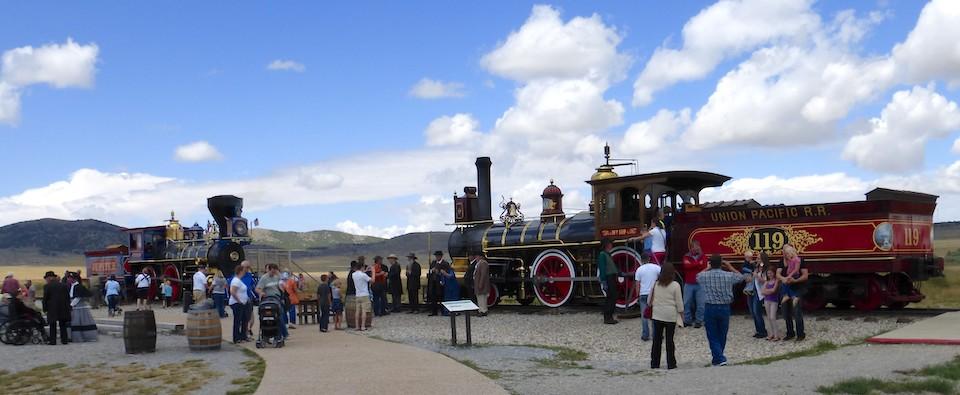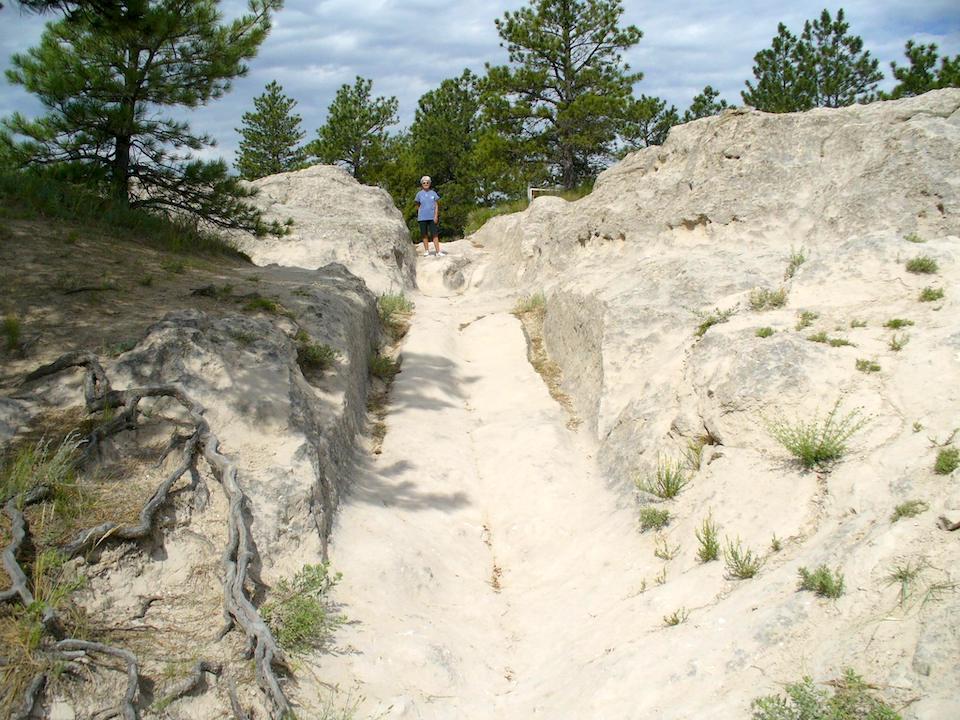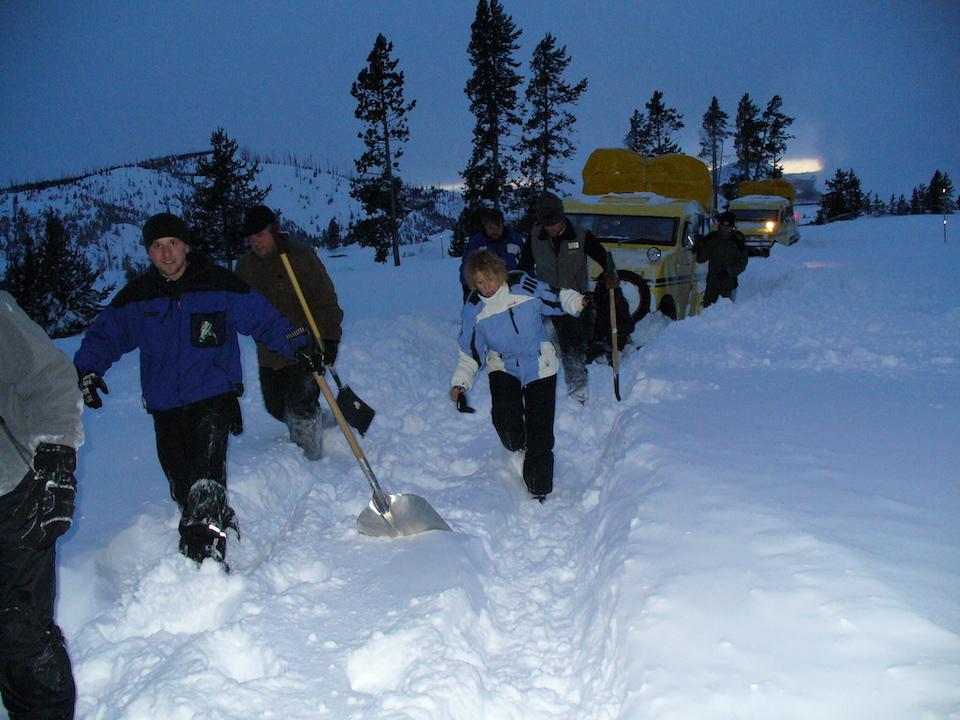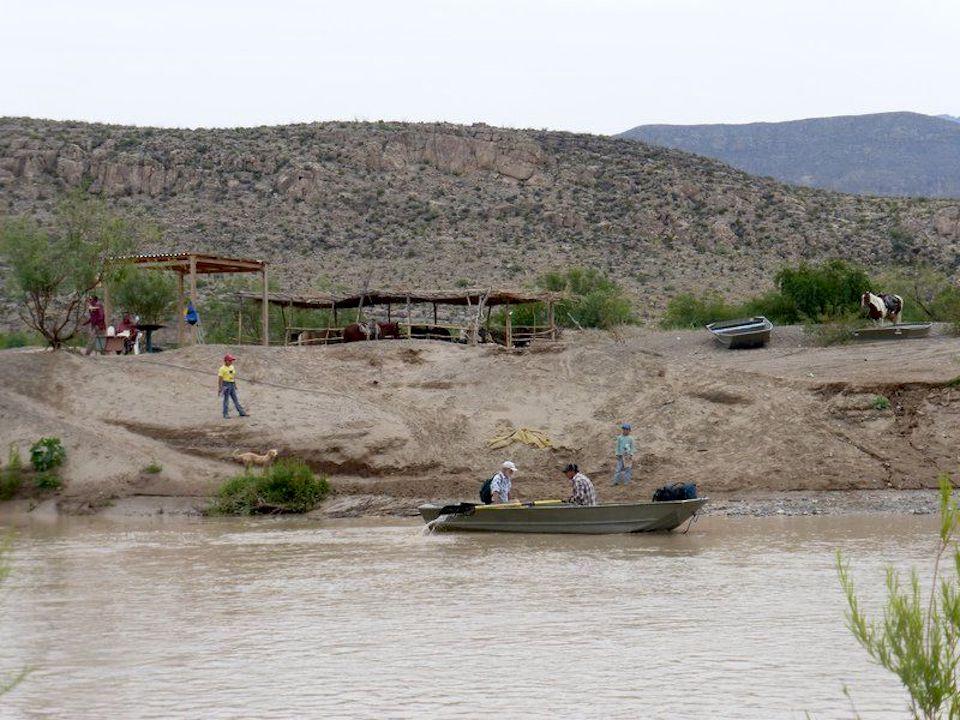
The annual Railroaders' Festival at Golden Spike National Historical Park is a popular event/Kay and David Scott
The two of us have enjoyed a half century of travel, much of it devoted to visiting America’s national parks. The initial three decades involved travel in a series of four Volkswagen campers, a vehicle we loved, but that disappeared in 2004 from VW dealers in the United States. If only the company would export its California van to the U.S. More recently we tented and stayed in national park lodges. The many national park visits offered some wonderful surprises, including these ten that we seem to remember best.

Full Moon Walk at Devils Tower National Monument - During a drive from Yellowstone back home to south Georgia we detoured to northeastern Wyoming for a couple of nights of camping in Devils Tower National Monument. The campground in a grove of cottonwood trees had been one of our favorite places to camp even prior to the movie release of Close Encounters of the Third Kind. A notice on the campground bulletin board alerted us to a ranger-guided full moon walk on the second night of our stay. Near the end of the 1 1/2-hour evening walk our group of about a dozen hikers scampered up and over a hill to gaze in awe at a brilliant full moon glowing beside Devils Tower. It was a magical moment.
The Pony Express Rides Again at Scotts Bluff National Monument – Scotts Bluff in western Nebraska served as a warning to pioneers that the going was about to become a lot more difficult as they headed west on the Oregon, California, and Mormon Trails. Mitchell Pass at Scotts Bluff was also used by Pony Express riders. A 2015 visit to Scotts Bluff National Monument coincided with a stop by a rider during the annual Pony Express re-ride. Each year a group of 600 or so devotees participate in a relay following the old Pony Express trail from St. Joseph, Missouri, to Sacramento, California. On this beautiful day in June we happened to be in the right place at the right time.
Rendezvous at Fort Laramie National Historic Site – Driving west one summer we stopped at Fort Laramie National Historic Site, a former 1800s military garrison on the Oregon Trail. To our good fortune our visit happened to occur during the historic site’s annual rendezvous that took place each June. Individuals portraying trappers and traders demonstrated crafts and displayed handiwork while talking with visitors about life in the 1800s. The annual rendezvous during our visit brought National Park Service living history programs to a new level. Unfortunately, the program was discontinued several years ago.
Agile Bear Performance in Shenandoah National Park – During a road trip along Skyline Drive in Virginia’s Shenandoah National Park we stopped for the night at Lewis Mountain Cabins, a small facility of one- and two-room rustic cabins constructed in 1939. Early the following morning while sitting on the front porch sipping coffee, a bear moseyed out of the woods directly across the road and scampered to near the top of a tall tree where he (or she) checked on area activity. Apparently observing nothing of interest, the bear quickly backed down the tree and ambled off along the road. What a wonderful way to begin the morning in a national park!
July 4th Celebration in Death Valley National Park – A 1996 road trip to gather information for the initial edition of our national park lodging guide included a two-night stay at Furnace Creek Ranch in Death Valley National Park. The second day happened to be July 4 and the temperature at Furnace Creek hit 124 degrees in the shade. Despite the heat, management and staff held a 4th of July parade of decorated golf carts followed by a cookout accompanied by various games, all of which took place outdoors. The two of us participated and won a squirt gun as first prize in the three-legged race. Despite living in south Georgia this was heat we had never experienced.

The ruts along the Oregon Trail not far from Fort Laramie National Historic Site are impressive/David and Kay Scott
Impressive Ruts of the Oregon Trail – The summer of 2010 was devoted to a road trip following the Oregon Trail from Independence, Missouri to Oregon City, Oregon. In southeastern Wyoming, just outside the small town of Gurnsey, we experienced the five-foot deep trail ruts made by thousands of pioneer wagons and horses climbing a steep sandstone incline. Our walk along the ruts became a surprising highlight of a trip so enjoyable we repeated the entire journey seven years later. Following a visit to Fort Clatsop we returned home following the Lewis & Clark Trail, but that’s another story.
Godzilla of Yellowstone Blizzards – A February 2008 visit to Yellowstone included a doozy of a winter storm. Following a two-night stay in West Yellowstone we were to enter Yellowstone National Park the following morning. The entry was delayed by a blizzard so severe it caused officials to close the park. We killed much of the day in the West Yellowstone Visitor Center before two snow coaches were able to get the two of us along with a number of park employees delivered to Old Faithful Snow Lodge after sunset. Along the way our coach got stuck in the snow and had to be dug out with shovels. Following next morning’s breakfast at the lodge we donned snowshoes and plodded our way to Old Faithful Geyser, where we were the only two people in sight. What a memorable experience.

There are snowstorms, and then there are snowstorms that halt snowcoaches in Yellowstone National Park/David and Kay Scott
Golden Spike Festival – During a summer 2015 road trip we followed sections of the Oregon, Mormon and California Trails through Utah, Wyoming, Idaho, and Oregon. On the return to Salt Lake City we stopped by Golden Spike National Historic Site, the location where officials of the Central Pacific and Union Pacific Railroads on May 10, 1869, drove the last spike to signify completion of the transcontinental railroad. Upon entering the historic site we were surprised to learn it was the day of the annual Railroaders’ Festival that is held each August. What a great time with games, operating replica locomotives, and a reenactment of the driving of the last spike. We even got to muscle a handcar down the rails.
Mexican Border Crossing in Big Bend National Park – During a three-day visit to Big Bend National Park in May 2015, we decided to use the park’s Mexican border crossing that had been closed since 2001, but reopened two years earlier. Passing through the U.S. port of entry, we walked over a small hill to the Rio Grande and waited on the river bank as a young Mexican fellow rowed a small boat across the river to pick us up. The crossing was accompanied with loud singing by an older gentleman standing on a hill on the Mexican side of the river. Arriving on the opposite bank we walked up the steep hill where the singer/businessman collected $5 each for the round-trip crossing and another $5 each for a mule ride into town and back. A tip jar sat atop his card table. Our Rio Grande border crossing became a surprise highlight and most memorable event of the trip.

You don't have to get wet to travel from Big Bend National Park across the Rio Grande River to Mexico/David and Kay Scott
Partial rainbow inside the Grand Canyon – The Grand Canyon may well be the most impressive sight in all of nature. Adding a partial rainbow inside the canyon only ups the ante. In summer 2008 we rode the Grand Canyon Railroad from Williams, Arizona, to the South Rim of the Grand Canyon for a two-night stay. During an evening walk along the rim on our way to the El Tovar for supper we glanced to our left toward the canyon and observed rain clouds. Below the canyon rim was a brilliant blob of colors. Although not really a rainbow, it was such an unusual sight that we stopped and stared. Fortunately, the partial rainbow remained long enough for Kay to pull out our camera and snap a couple of pictures.
David and Kay Scott are authors of “Complete Guide to the National Park Lodges” (Globe Pequot). Visit them at mypages.valdosta.edu/dlscott/Scott.



Comments
Such memories! I envy the authors.
What an adventuresome narrative. It should encourage even the most reluctant traveler to take to the roads and see our beautiful country. Thanks for reminding us that no matter your circumstance whether in a tent or a luxurious hotel, whether in a blizzard or sweltering heat if we pack along the right attitude our memories will be enriched.
Thanks also for including parks other than the most popular ones and that many are open year round.Your short Mexico crossing was so well presented I almost felt I was there.